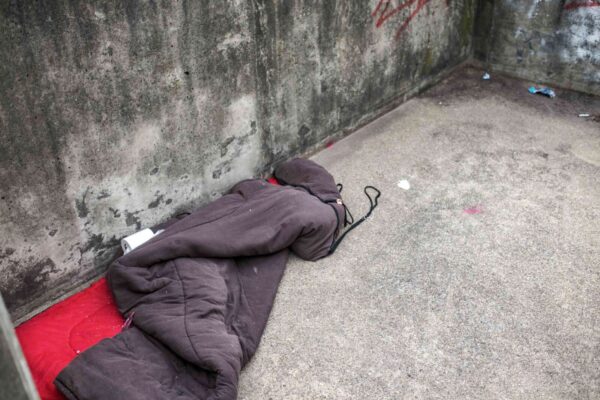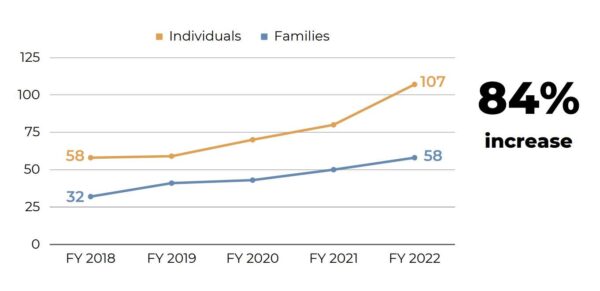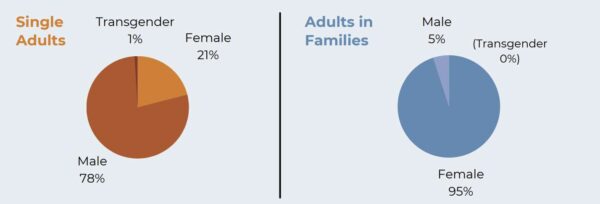
Arlington County says it provided assistance to 1,070 people who were experiencing homelessness or at risk of losing housing last year.
This number is five times higher than the number of people found living outside or in a shelter one night in January 2022. One night last winter, as part of the “point-in-time” count, 182 people did not have permanent, stable housing, according to a new report on homelessness in Arlington.
The recently released report says the larger figure more accurately captures the portion of the population experiencing homelessness in Arlington.
In a statement, Arlington County Dept. of Human Services Director Anita Friedman said that, without Covid-era eviction prevention efforts, the number of people who received services would have been higher.
“The total number of individuals served in FY 2022 was almost identical to pre-pandemic levels,” Friedman said. “Without strong eviction prevention efforts, we would have seen many more households upended and in crisis.”
Some $20 million in local, state and federal funding helped more than 3,400 households stave off eviction, according to the county.
The report comes as Arlington County embarks on a goal to bringing homelessness down to what it calls “functional zero” for several specific demographics. That means homelessness is “rare and brief” for a given population, such as young adults, families and survivors of domestic violence.
“For those households that do experience homelessness, it is traumatic, and we remain committed to working alongside them as they return to housing stability,” Friedman said. “We will also continue to address critical gaps, including in the areas of racial equity, immigrant and refugee households, and the aging population.”
Arlington County addresses homelessness through a network of programs and services it calls the Continuum of Care, or CoC. The report says that DHS staff and nonprofit program leaders have spent the last 10 years improving how the CoC prevents homelessness and finds permanent housing for people.
For instance, through the CoC, county and community partners work together to connect people to stable housing, jobs, childcare and emergency financial assistance, and provide behavioral health services to people living on the streets — a service that helped 65 people last year.
What homelessness looks like in Arlington
Of the 1,070 who received services through the CoC, there were:
- 744 single adults
- 105 families
- 36 veterans
- 74 young people aged 18-24
- 192 people in “chronic homelessness,” or individuals with a documented disability who have experienced at least 12 months of homelessness in one stretch or at least four times in less than three years
Excluding people in Arlington’s shelter for people escaping domestic violence, run by the nonprofit Doorways, 305 people were served in Arlington shelters. This includes 13 veterans and 25 chronically homeless individuals. The average length of stay was three months.
Meanwhile, the county report says demand for safe housing among domestic violence survivors — including individuals and families — is increasing.

While some 165 people received shelter at Doorways, the number of people who called its hotline was much higher: advocates counseled people on domestic and sexual violence during a total of 1,039 calls, per the report. Most of the time, people leaving these situations are women.
“Domestic violence is one of the leading causes of homelessness for families, and the leading cause of homelessness for women,” the report says.
Women are also more likely to be at the head of a family experiencing homelessness, per the report. Of the families counted one night in January, women were the adult in the family 95% of the time.
Meanwhile, 78% of homeless individuals were men and 1% identified as transgender.


